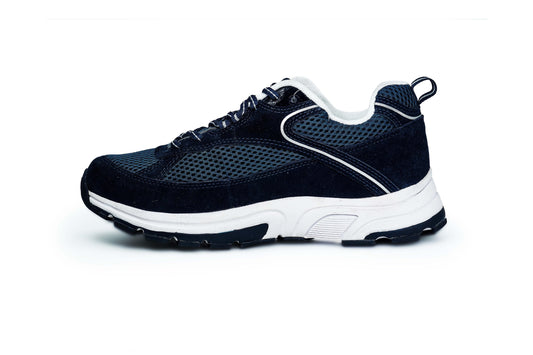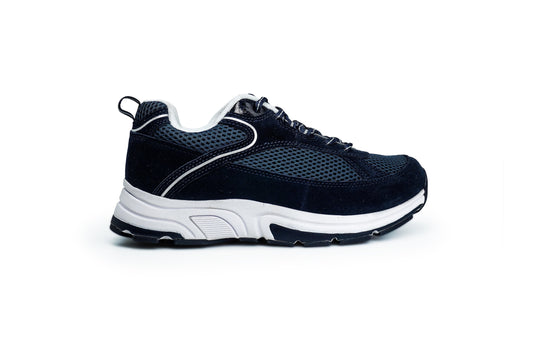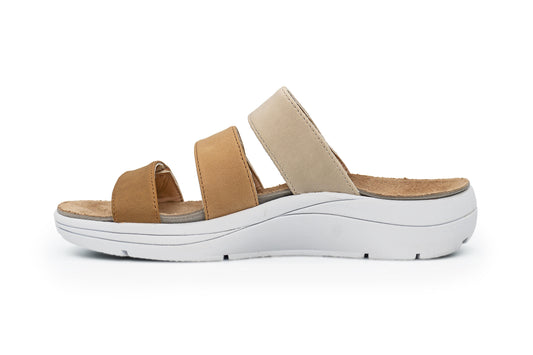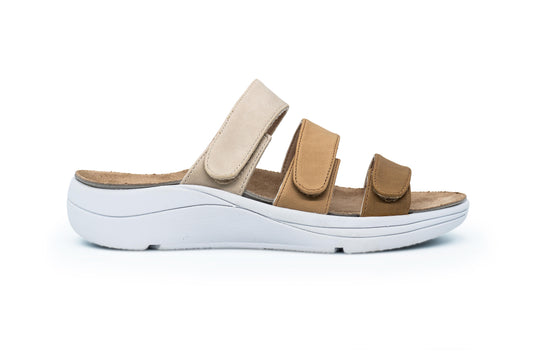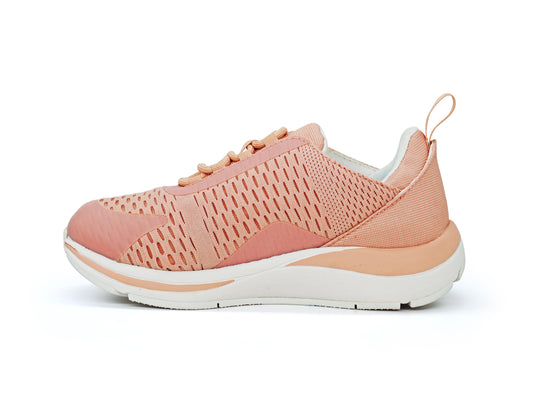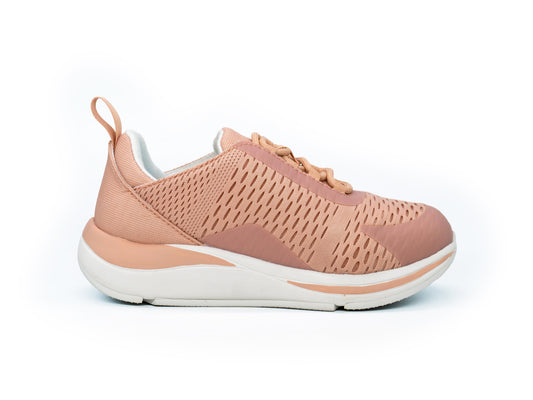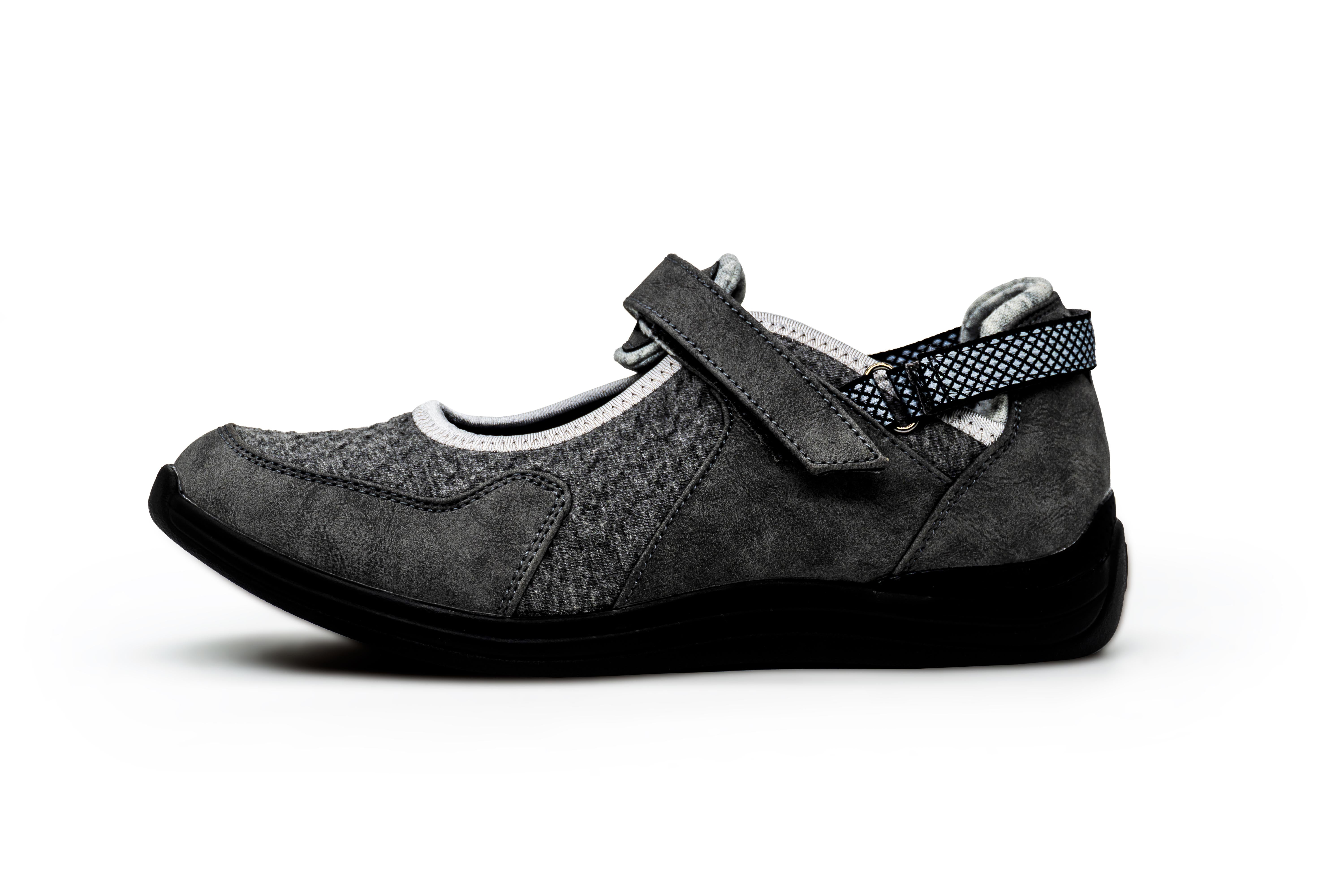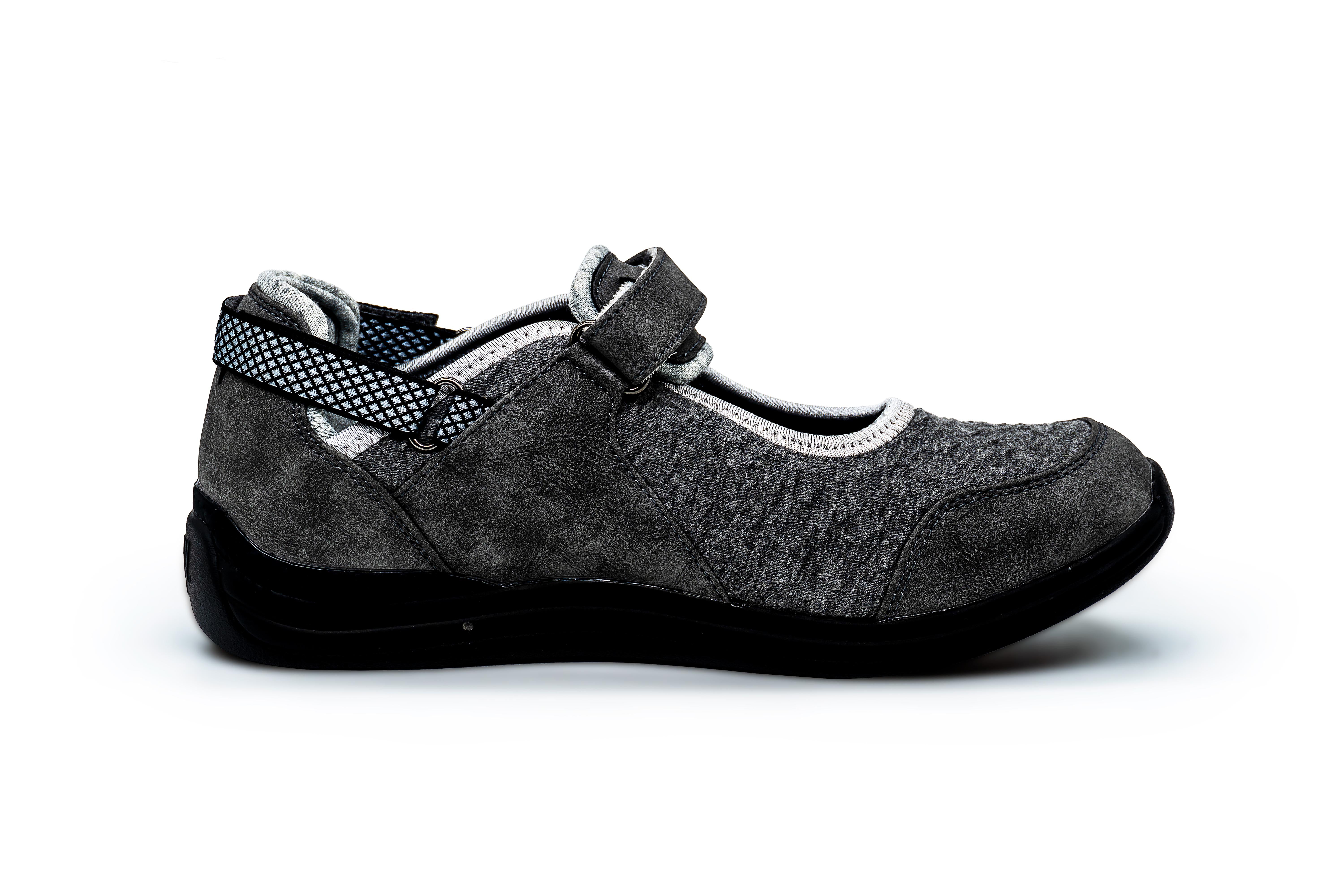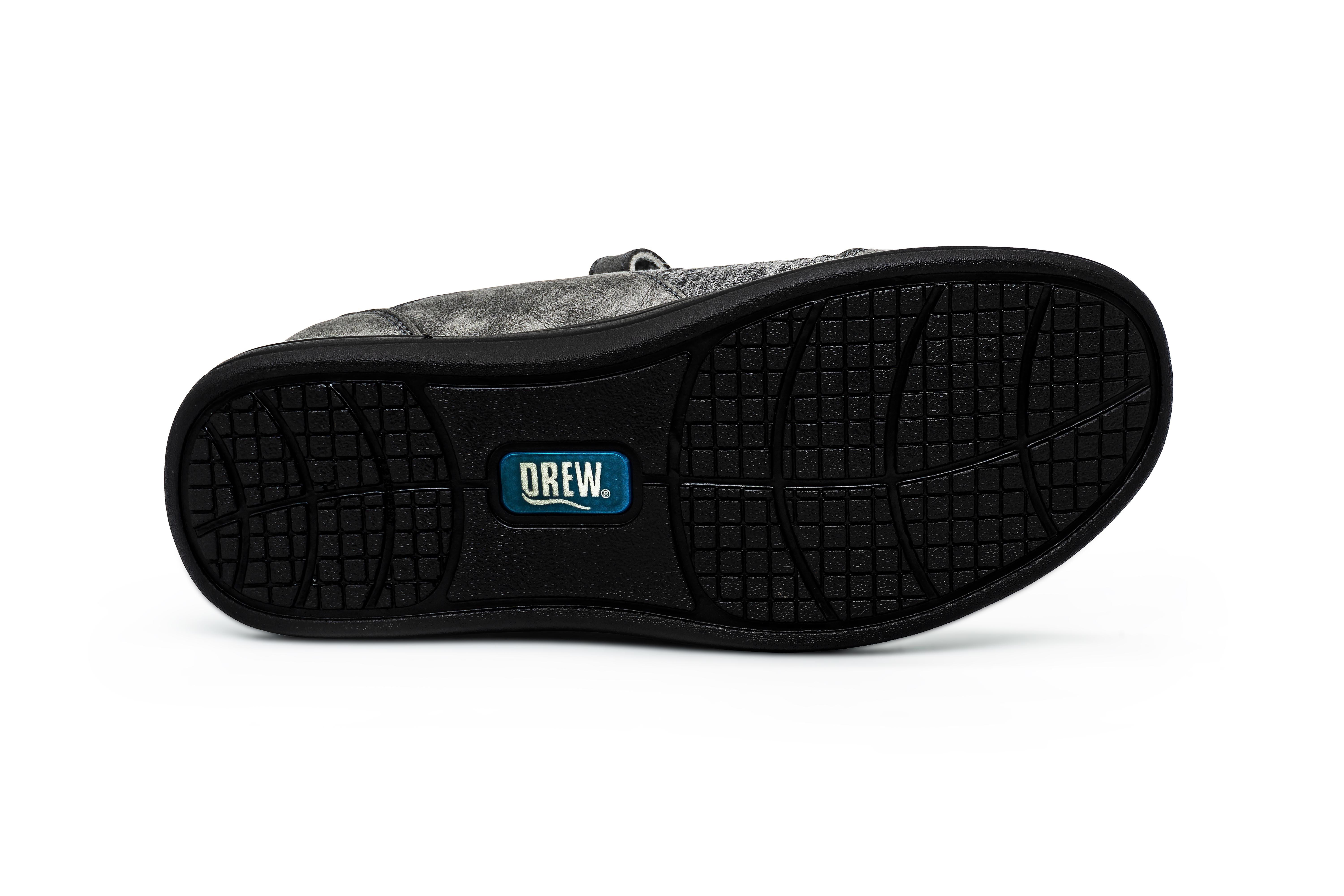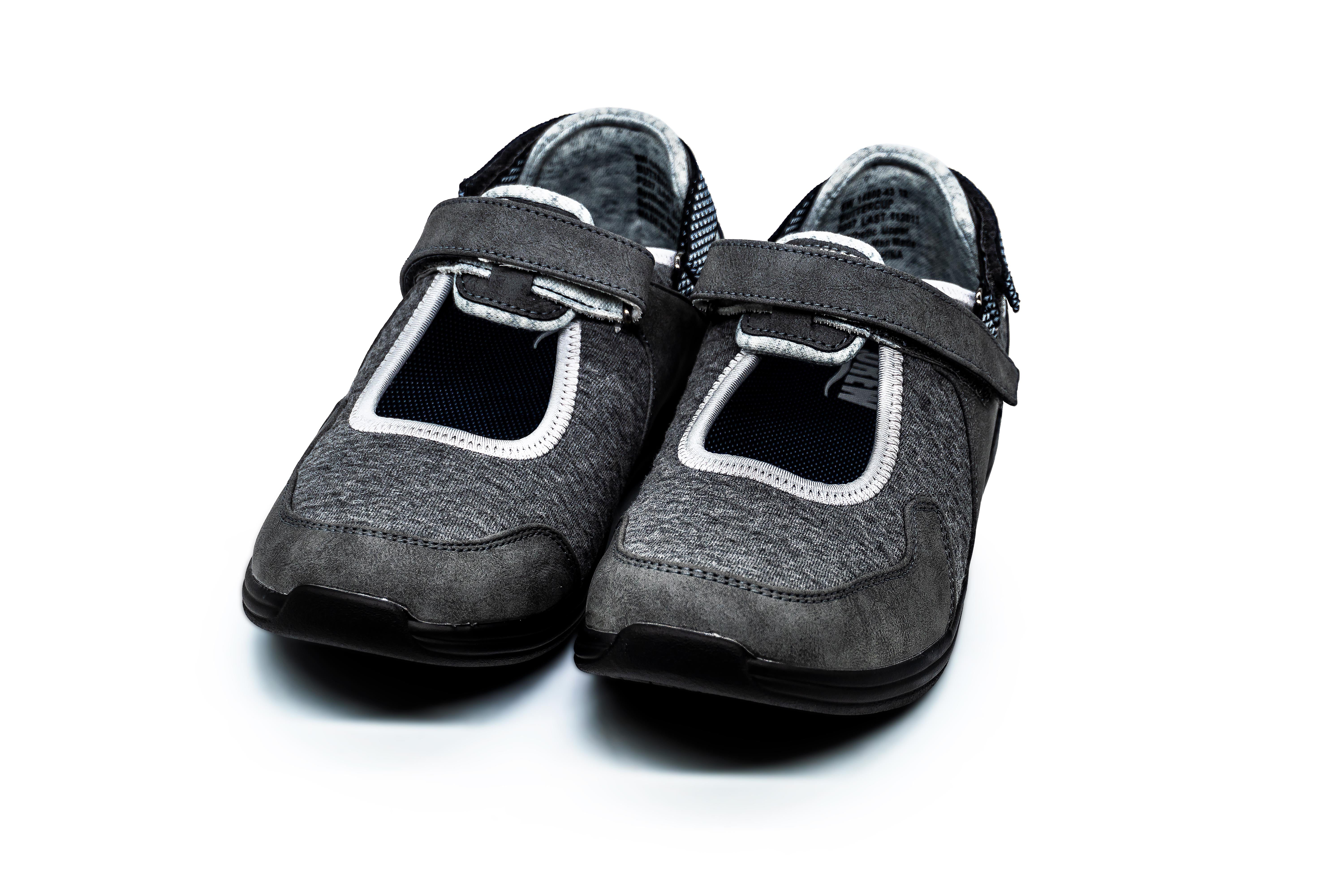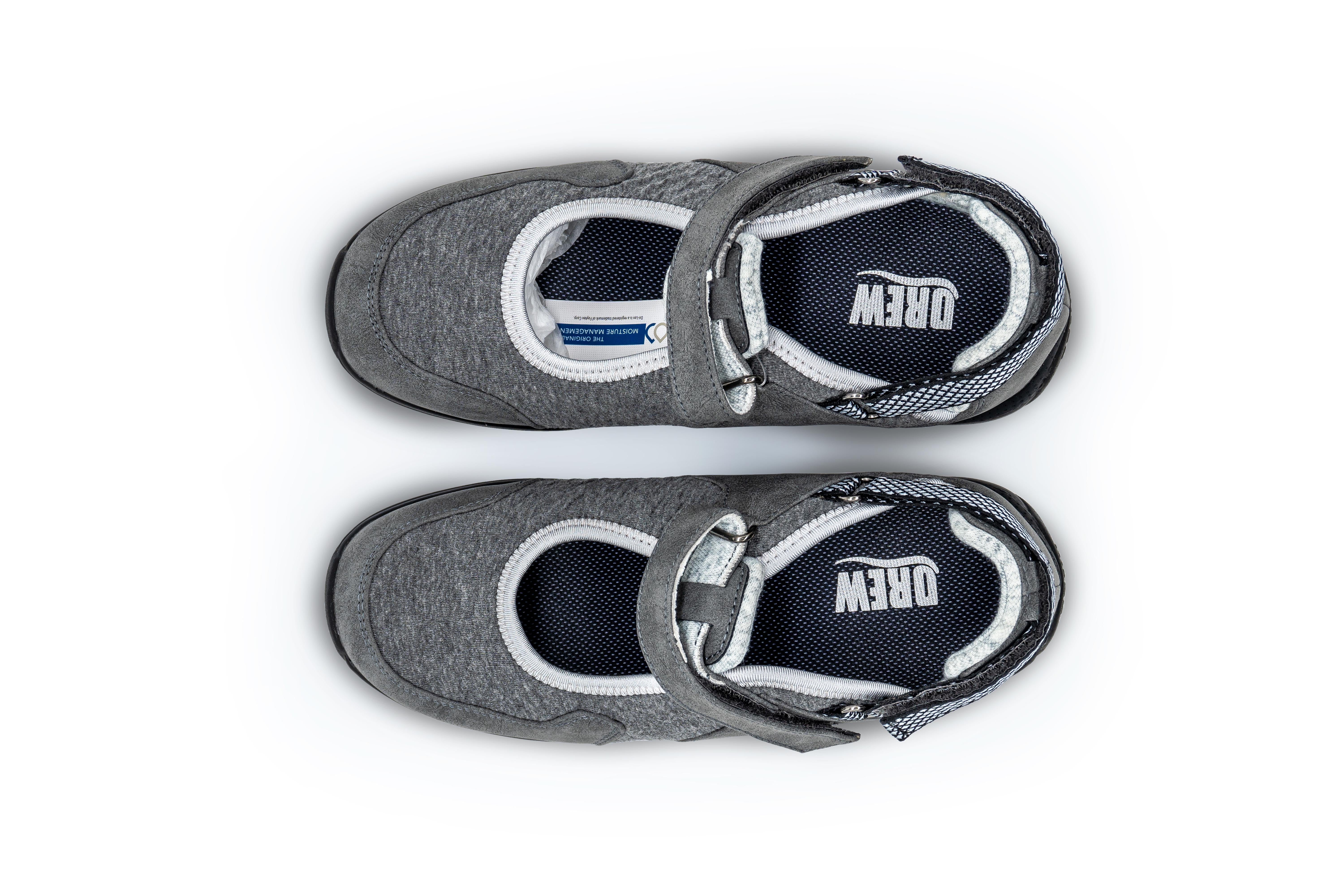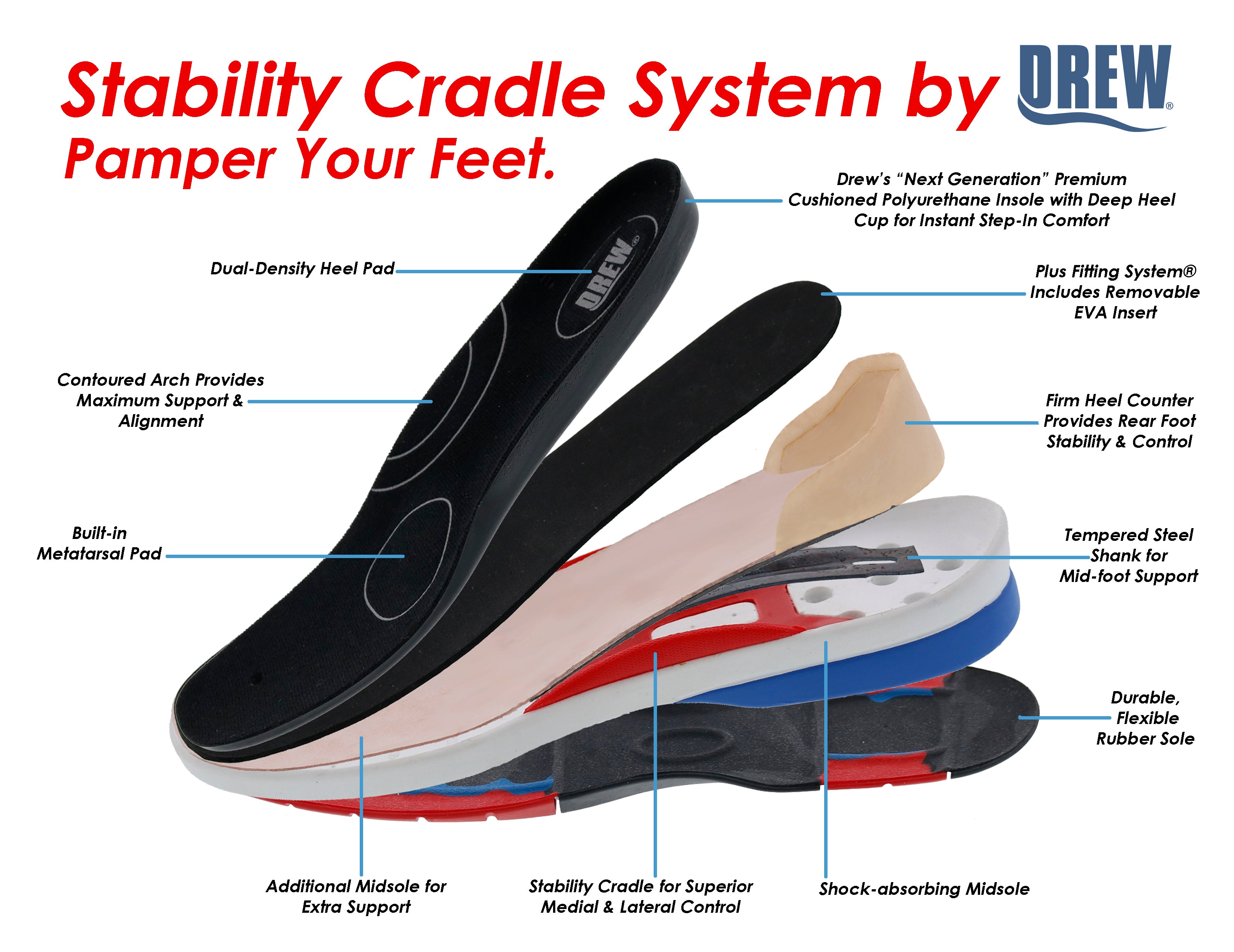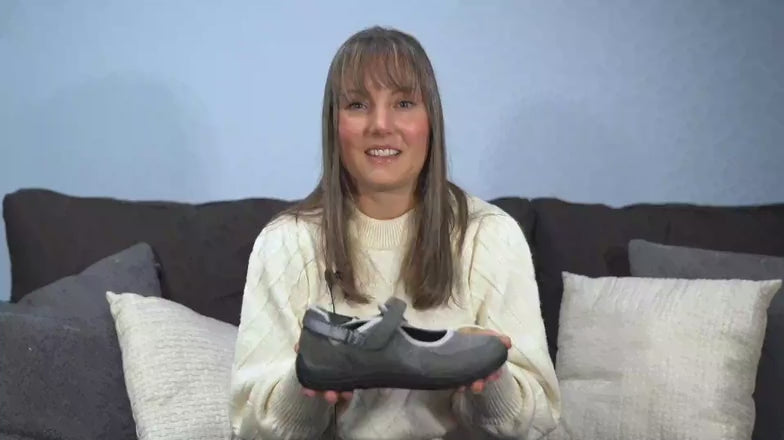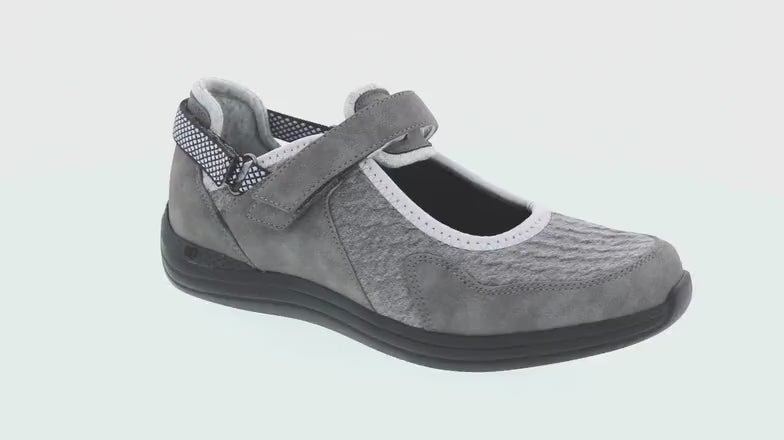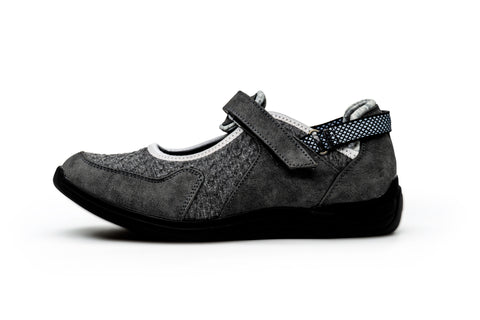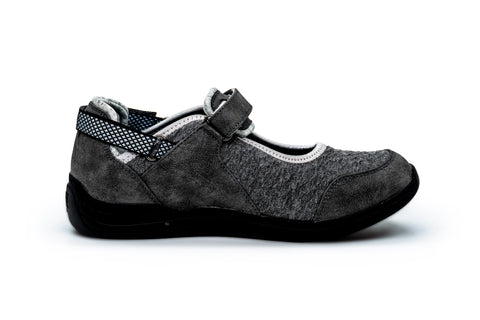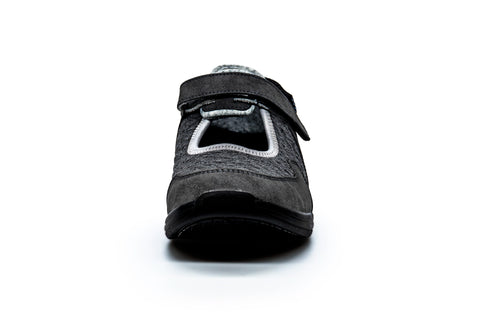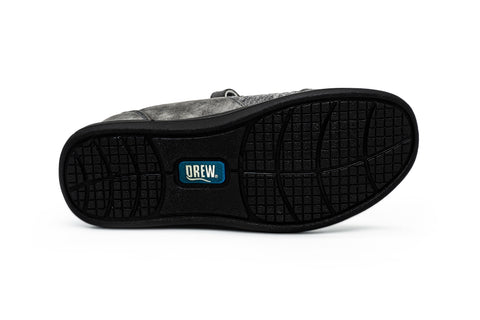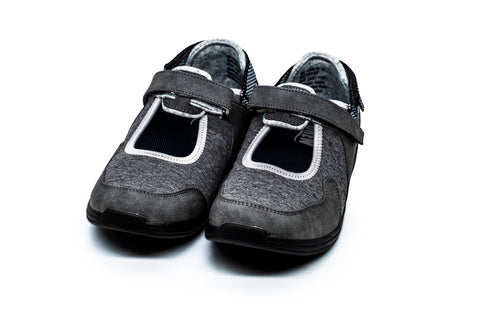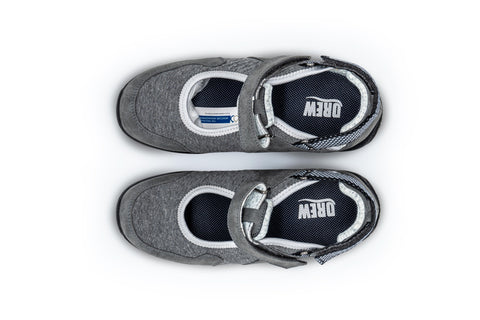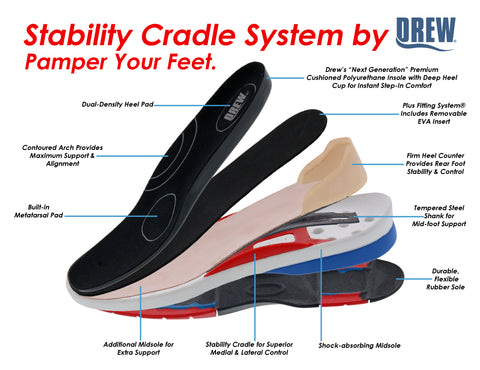Diabetic shoes are specialized footwear designed to protect the feet of people with diabetes from injury and complications. Due to conditions like neuropathy (nerve damage) and poor circulation, which are common with diabetes, a simple blister or cut can escalate into a serious infection, a non-healing ulcer, or even lead to amputation.
Diabetic shoes, also known as therapeutic shoes or extra-depth shoes, are a crucial part of a comprehensive foot care plan for individuals at risk
Key Features of Diabetic Shoes
Diabetic shoes are not just regular shoes with a different label; they are constructed with specific features to address the unique needs of a diabetic foot. These features include:
-
Extra Depth: They are designed with extra room in the toe box and overall shoe to accommodate custom orthotics or special inserts. This extra space prevents pressure points and friction that could lead to skin breakdown.
-
Seamless Interior: The inside of the shoe is made with soft, non-abrasive materials and has few, if any, seams. This is a critical feature to prevent rubbing and irritation on sensitive skin, which can easily lead to blisters and ulcers.
-
Wide and Deep Toe Box: This provides ample room for toes to move freely and prevents crowding, which can put pressure on bunions, hammertoes, and other foot deformities common in people with diabetes.
-
Removable Insoles: Diabetic shoes come with removable, cushioned insoles. This allows for the use of custom orthotics (shoe inserts) prescribed by a doctor to provide targeted support, offload pressure from vulnerable areas, and improve foot alignment.
-
Firm Heel Counter: A firm heel counter helps to stabilize the heel and ankle, which can improve balance and reduce the risk of falls, a concern for people with neuropathy.
-
Cushioned, Shock-Absorbing Soles: The soles are designed to absorb the impact of walking, reducing the vertical pressure on the feet and protecting bones that may be weakened by poor circulation.
-
Breathable Materials: They are often made from materials like leather or mesh to allow air circulation, which helps keep the feet dry and reduces the risk of fungal infections.
-
Adjustable Closures: Features like laces or Velcro straps allow the wearer to adjust the fit throughout the day to accommodate changes in foot swelling.
Orthopedic shoes are specially designed footwear that provides support, stability, and comfort for individuals with foot ailmens such as flat feet, plantar fasciitis, arthritis, bunions, and diabetic foot complications. Orthoshoes are designed to be comfortable and supportive for people with a variety of foot conditions. Our shoes come with premium orthotic insoles that provide arch support and cushioning. We feature a wide toe box which can help prevent irritation and rubbing. Plus the interior of our shoes is made with soft, cushioning materials that can help eliminate pressure points.
Orthopedic shoes are a broad category of footwear designed to provide superior support, comfort, and corrective function for people with specific foot, ankle, or leg conditions. While all shoes are meant to support your feet, orthopedic shoes are engineered with features that go beyond standard comfort to address and alleviate a wide range of biomechanical issues.
It's a common misconception that orthopedic shoes are only for the elderly or for people with severe foot problems. In reality, they can benefit anyone with chronic foot pain, deformities, or a need for better support due to an active lifestyle or a pre-existing condition.
Key Features of Orthopedic Shoes
What sets orthopedic shoes apart is their construction and design, which focus on foot health and stability. Key features include:
-
Customizable Support: Many orthopedic shoes are built with removable insoles, allowing them to accommodate custom-made orthotics or arch supports. These inserts are tailored to an individual's foot shape and specific needs, providing targeted relief and correction.
-
Wider and Deeper Fit: They often feature a wider and deeper toe box to accommodate foot deformities like bunions and hammertoes without causing painful friction. The extra depth also ensures there is enough room for thick orthotics without making the shoe feel tight.
-
Sturdy Construction: Orthopedic shoes are typically made from high-quality, durable materials. They have a firm heel counter to stabilize the back of the foot and a rigid shank (the part of the sole that runs from the heel to the ball of the foot) to prevent the shoe from bending in the wrong place. This structure helps control motion and reduces strain on the foot and ankle.
-
Cushioned and Shock-Absorbing Soles: The soles are designed to absorb impact from walking and standing. This cushioning protects the joints and soft tissues in the feet, ankles, and knees, which is particularly beneficial for conditions like plantar fasciitis or arthritis.
-
Adjustable Closures: Laces, Velcro straps, or buckles allow for a secure and customized fit that can be adjusted to accommodate swelling throughout the day.
Our shoes have arch support to align the foot and multi-cushioned soles to absorb impact. This helps alleviate fascia pain and pressure points at the heel.
Our shoes enhance comfort and relieve heel pain associated with plantar fasciitis and heel spurs.
Choosing the right footwear is one of the most effective ways to alleviate and prevent plantar fasciitis and heel pain. The right shoes help to reduce the strain on the plantar fascia ligament, absorb shock, and provide the support your feet need to heal.
Key Features to Look for in Footwear when shopping for shoes to help with plantar fasciitis, keep these features in mind:
Excellent Arch Support: This is the most critical feature. A shoe with a contoured, supportive arch helps to distribute pressure evenly across the foot, preventing the plantar fascia from overstretching. The arch support should feel firm and not collapse under your weight.
Cushioned Sole: Look for shoes with a thick, shock-absorbing midsole, especially in the heel. Materials like EVA foam or gel inserts can help absorb the impact of each step, reducing stress on the heel bone and the plantar fascia.
Firm Heel Counter: The heel counter is the rigid part of the shoe that cups the back of your heel. A firm heel counter helps to stabilize the foot and prevent excessive motion that can aggravate the plantar fascia.
Slightly Elevated Heel (Heel-to-Toe Drop): A slight heel-to-toe drop (around 6-10 mm) can help reduce tension on the plantar fascia and Achilles tendon. Avoid completely flat shoes.
Proper Fit: Ensure the shoe fits well. Your toes should have enough room to move freely, and your heel should be held snugly in place without slipping. Shoes that are too tight or too loose can worsen symptoms.
Roomy Toe Box: A wide toe box allows your toes to spread naturally, which improves balance and reduces pressure on the front of the foot.</p>
Diabetic shoes are typically recommended for individuals with diabetes who have:
-
Neuropathy: Nerve damage that causes a loss of sensation in the feet, making it difficult to feel pain from a cut or blister.
-
Poor Circulation: Reduced blood flow to the feet can slow wound healing.
-
Foot Deformities: Conditions like bunions, hammertoes, or Charcot foot can make it difficult to wear standard shoes without causing injury.
-
History of Foot Ulcers or Injuries: People who have previously had foot sores or ulcers are at a higher risk of recurrence.
The primary benefit of diabetic shoes is prevention. By wearing them, individuals can significantly reduce their risk of serious foot complications, including:
-
Preventing Ulcers and Blisters: The seamless, cushioned interior and proper fit protect the skin from friction and pressure that can lead to sores.
-
Improving Circulation: A non-constricting fit and a design that accommodates swelling can help promote better blood flow to the feet.
-
Reducing Pressure Points: The extra depth and supportive inserts redistribute weight and pressure evenly, protecting high-risk areas.
-
Enhancing Stability: The supportive structure can help improve balance and reduce the risk of falls, a major concern for people with neuropathy.
When selecting orthopedic shoes, it's best to consult with a podiatrist or a certified pedorthist. They can perform a thorough foot evaluation, recommend the best type of shoe for your condition, and fit you for any necessary orthotics. While you can find many shoes labeled "orthopedic" at retail stores, a professional fitting ensures you get a shoe that truly addresses your specific needs.
Remember, the goal of orthopedic shoes is not just to be comfortable, but to provide the therapeutic and preventative support your feet need to stay healthy and functional.
Orthopedic shoes are designed to provide specialized support and comfort for people with various foot, ankle, and leg conditions. While they are sometimes associated with older adults, many people of different ages can benefit from them.
Here are the groups of people who most commonly need to use orthopedic shoes:
1. Individuals with Chronic Foot Pain or Discomfort: If you experience persistent pain in your feet, especially in your heels or arches, orthopedic shoes can provide significant relief. They are particularly helpful for conditions such as:
-
Plantar Fasciitis: The excellent arch support and cushioning in orthopedic shoes can help reduce the strain on the plantar fascia ligament.
-
Metatarsalgia: Pain in the ball of the foot.
-
Heel Spurs: Bony growths on the heel bone that can be painful.
2. People with Foot Deformities or Abnormalities: Orthopedic shoes are constructed to accommodate and protect feet with structural issues. They are often a necessity for those with:
-
Bunions: The wider and deeper toe box prevents painful pressure on the bony bump at the base of the big toe.
-
Hammertoes: The extra depth and seamless interior prevent rubbing and irritation on bent toes.
-
Flat Feet (Pes Planus): Shoes with built-in arch support help correct the collapsed arch and improve foot alignment.
-
High Arches (Pes Cavus): The cushioning helps to properly distribute weight and absorb shock that might otherwise be concentrated on the heel and ball of the foot.
3. People with Systemic Medical Conditions: Certain health conditions can directly impact foot health, making supportive footwear essential for both comfort and prevention. This includes individuals with:
-
Diabetes: Specialized orthopedic shoes, often called diabetic shoes, are crucial for preventing foot ulcers and other complications from nerve damage (neuropathy) and poor circulation.
-
Arthritis: The cushioning, support, and non-constricting fit can reduce joint pain and swelling caused by conditions like osteoarthritis and rheumatoid arthritis.
-
Gout: During a flare-up, a wide and comfortable shoe is essential to avoid putting pressure on the painful joint, often in the big toe.
4. Individuals Recovering from Injury or Surgery: After a foot or ankle injury or a surgical procedure, orthopedic shoes provide the necessary stability, protection, and support to facilitate proper healing. They can also accommodate swelling and custom orthotics or braces.
5. People with Mobility or Gait Issues: Orthopedic shoes can help improve walking patterns and balance for those with:
-
Overpronation or Supination: The firm heel counter and motion-control features help prevent the foot from rolling too far inward or outward.
-
Chronic Ankle Sprains: The stability provided by the shoe can help prevent repeated injuries.
6. Individuals with Physically Demanding Jobs: If your job requires you to stand or walk for long periods on hard surfaces (e.g., nurses, teachers, factory workers), the superior cushioning and support of orthopedic shoes can prevent foot fatigue and pain.
While many people can benefit from the general comfort and support of shoes with orthopedic features, it is always best to consult with a podiatrist or orthopedic specialist. They can provide a proper diagnosis and recommend the specific type of footwear or custom orthotics that will best address your individual needs.
In many cases you can request your primary Physician for prescribing. HCPCS Code is A5500.
This can be claimed and covered with your insurance policy. Terms & Conditions Apply*
-
Redistributing pressure to alleviate pain from high-pressure points.
-
Providing arch support to prevent overpronation (the inward rolling of the foot).
-
Improving gait and overall alignment.
-
Stabilizing foot movement with features like firm heel counters.
Modern orthopedic shoes come in a wide range of stylish and lightweight designs. While they may have a different construction than regular shoes, they are not necessarily heavier and are built for comfort and function.
An orthotic is a custom-made insole or insert that fits inside a shoe to address a specific foot imbalance. An orthopedic shoe is the entire shoe structure, which is designed with therapeutic features. You can often use custom orthotics inside orthopedic shoes for a personalized fit.
You should talk to your doctor about diabetic shoes if you have been diagnosed with diabetes and have any of the following conditions:
-
Neuropathy (numbness or loss of sensation)
-
Foot deformities (like bunions or hammertoes)
-
Poor circulation
-
A history of foot ulcers or calluses
-
Swelling in your feet
Plantar fasciitis is an inflammation of the plantar fascia, a thick band of tissue that runs across the bottom of your foot, connecting your heel bone to your toes. This condition is a common cause of heel pain, often described as a stabbing pain with your first steps in the morning.
Proper footwear is crucial for managing and recovering from plantar fasciitis. The right shoes can:
-
Reduce strain on the plantar fascia by providing support and cushioning.
-
Absorb shock from walking on hard surfaces, which reduces stress on your heel.
-
Promote proper foot alignment to prevent overpronation (the inward roll of your foot), which can worsen the condition.
-
Relieve pain by evenly distributing pressure across your foot.
A high arch, also known as pes cavus, is a foot type where the arch of the foot is significantly raised, even when bearing weight. Unlike a normal or flat foot, a high arch leaves very little to no impression in the middle when you do a wet test (stepping on paper with a wet foot).
A high arch can be a rigid and less flexible foot. Because the arch doesn't flatten to absorb shock, the pressure is not distributed evenly. Instead, it is concentrated on the ball and heel of the foot, which can lead to a variety of issues, including:
-
Foot pain, especially in the heel and ball of the foot (metatarsalgia).
-
Plantar fasciitis.
-
Hammertoes or claw toes.
-
Ankle instability and a higher risk of sprains.
-
Difficulty finding shoes that fit properly.
A flat foot, also known as pes planus, is a foot type where the arch on the inner side of the foot is either completely collapsed or very low. When a person with flat feet stands, the entire sole of the foot may touch the floor.
While many people with flat feet experience no pain or issues, for others, the condition can lead to pain and discomfort. This is often due to a biomechanical issue called "overpronation," where the ankle and foot roll inward excessively when walking or running. This can cause:
-
Pain in the arch or heel (plantar fasciitis).
-
Shin splints.
-
Knee, hip, and lower back pain, as the body's alignment is affected.
-
Ankle instability and a higher risk of sprains.
-
Deformities like bunions or hammertoes over time.

